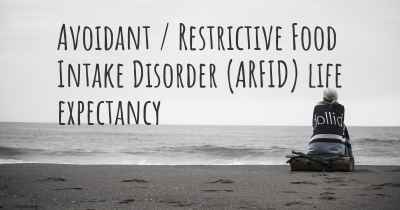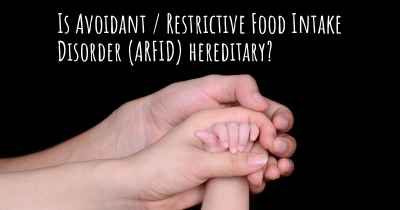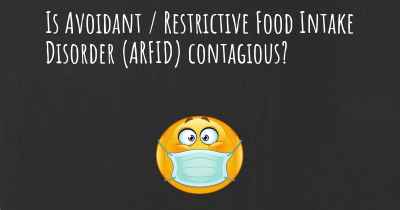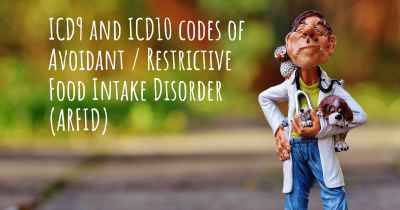What is the history of Avoidant / Restrictive Food Intake Disorder (ARFID)?
When was Avoidant / Restrictive Food Intake Disorder (ARFID) discovered? What is the story of this discovery? Was it coincidence or not?
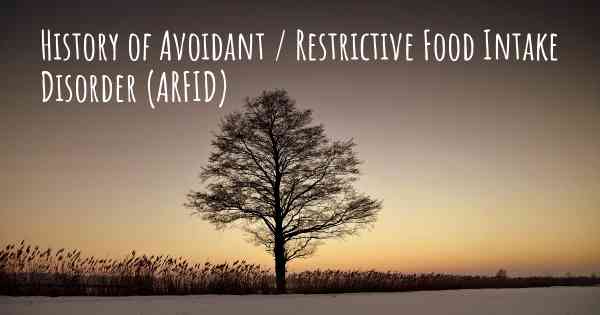
Avoidant/Restrictive Food Intake Disorder (ARFID) is a relatively new diagnosis in the field of eating disorders. It was first introduced in the fifth edition of the Diagnostic and Statistical Manual of Mental Disorders (DSM-5) in 2013. ARFID is characterized by a persistent and extreme avoidance or restriction of food intake, leading to significant weight loss, nutritional deficiencies, and impaired psychosocial functioning.
The history of ARFID can be traced back to earlier concepts and classifications of eating disorders. Prior to the inclusion of ARFID in the DSM-5, individuals who did not meet the criteria for anorexia nervosa or bulimia nervosa but still had significant eating difficulties were often diagnosed with "Feeding Disorder of Infancy or Early Childhood" or "Selective Eating Disorder."
Feeding Disorder of Infancy or Early Childhood was a diagnosis used primarily for children under the age of six who had difficulties with eating, such as refusal to eat certain foods or textures, and failure to gain weight. This diagnosis focused on developmental issues and was not specific to older children, adolescents, or adults.
Selective Eating Disorder was a term used to describe individuals who had a limited range of preferred foods and experienced distress or impairment due to their selective eating habits. However, this term was not widely recognized or used in the field of eating disorders, and there was a need for a more comprehensive and specific diagnosis.
The inclusion of ARFID in the DSM-5 was a significant step forward in recognizing and understanding the unique challenges faced by individuals with this disorder. The diagnostic criteria for ARFID include:
- Significant weight loss, nutritional deficiencies, dependence on nutritional supplements, or impaired psychosocial functioning due to food avoidance or restriction.
- Avoidance or restriction of certain foods based on sensory characteristics (e.g., texture, smell, taste), concerns about aversive consequences (e.g., choking, vomiting), or lack of interest in eating.
- The absence of body image disturbance or fear of weight gain, which distinguishes ARFID from anorexia nervosa.
Since the introduction of ARFID, research and clinical understanding of the disorder have continued to evolve. Studies have explored the prevalence of ARFID in different populations, risk factors, comorbidities, and treatment approaches.
Prevalence: Research suggests that ARFID may be more common than previously thought. It has been estimated that ARFID affects approximately 5-15% of individuals seeking treatment for eating disorders, making it the second most common diagnosis after anorexia nervosa.
Risk Factors: While the exact causes of ARFID are not fully understood, certain risk factors have been identified. These include early feeding difficulties, sensory sensitivities, anxiety disorders, autism spectrum disorder, and a history of gastrointestinal issues.
Comorbidities: ARFID often co-occurs with other mental health conditions, such as anxiety disorders, obsessive-compulsive disorder (OCD), attention-deficit/hyperactivity disorder (ADHD), and autism spectrum disorder. These comorbidities can complicate the diagnosis and treatment of ARFID.
Treatment: The treatment of ARFID typically involves a multidisciplinary approach, including medical, nutritional, and psychological interventions. The goals of treatment are to restore healthy eating patterns, address nutritional deficiencies, and improve overall well-being. Cognitive-behavioral therapy (CBT) and exposure therapy are commonly used to help individuals overcome their food aversions and expand their food repertoire.
In conclusion, the history of ARFID can be traced back to earlier concepts and classifications of eating disorders. The inclusion of ARFID in the DSM-5 marked a significant advancement in recognizing and understanding this unique disorder. Ongoing research and clinical efforts continue to enhance our understanding of ARFID and improve treatment outcomes for individuals affected by this condition.
Posted Apr 9, 2020 by layla ten cate 2550
